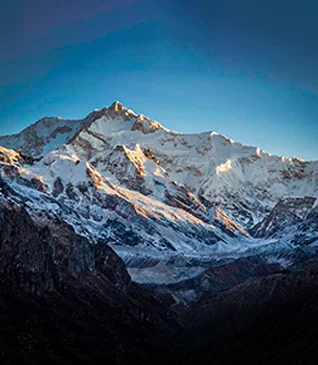We all love the white-glittering snow. The curiosity of that shining snow crystal drives us, that forget the burning. Though the snowfields look like the perfect icing on the cake, walking in snow is not a cakewalk. Only those who have hiked in snow can understand the pain. But, following some easy techniques can make the pain go away.
Here are some tips for walking in the snow efficiently.
Hard Snow
1- Use crampons or microspikes in case the snow has transformed into hard ice. Crampons or micro spikes work best if the ice is not that hard. If it is really hard then a lot of strength is required to fix the spikes.
2- In case of slippery hard ice, like. Chadar trek, gumboots must be used.
3- While ascending, keep the foot straight, bend your knees, and bend from the hip.
4- While descending, keep your foot straight or slant as per your comfort level. But make sure the whole foot sole comes in contact with the ground. This gives a lot of friction and avoids slipping. Take small steps. Do not run.
Loose Snow
Walking in loose is exhausting. The snow sucks in a lot of energy to insert the foot inches down, sometimes feet, then pull it out. However, there are some techniques that can be used to save energy.
1- Climbing up: Kick in with your toe and ascend like climbing on stairs. On previously formed steps (steps created by your guide or trekkers ahead of you), try to place the whole foot on the step. Don't raise the lower foot unless you are sure the first foot is stable. Many times, your foot may unknowingly go deep in snow. Do not get scared, just get support on your trekking pole and look for another stable step.
2- Climbing down: While descending use your heel to lock your feet in the loose snow. Put the entire weight on the foot and slowly let your feet slide down (a few inches) until your foot is stable. Only after that take the next step and follow the same technique for it.
3- Traverse or Moving Sideways: In the case of traversing, you need to sideways mostly in a straight line without going up or down the slope. To do so use foot edges to kick steps. Try to create steps by pushing in the foot edges putting weight on the foot and leaning towards the mountainside. Never put your weight on the valley side. Raise the next foot only after the first foot is stable. Place the next foot ahead of the first one, following the same technique. Try to use a trekking pole for balance.
Important Points
1- Always use a trekking pole with a snow cap. It helps a lot in case of feet-deep loose snow and also on hard snow.
2- Observe your Trek Leaders or guides. Try to copy their footwork, especially the kicking techniques.
3- Use an ice axe only if you have prior experience of handling ice. Always remember that an ice axe may turn into a weapon if not used properly.
4- Use gaiters for loose snow.
5- Preferably wear waterproof shoes when trekking in loose snow. After long hours of walking in the snow covering your shoes, the shoes get wet. Therefore, make sure your shoes are waterproof. Check out our video here on how to select proper hiking shoes.
6- Sometimes, a lot of strength is required for kicking in extremely hard snow using crampons.
7- For Stok Kangri or Kang Yatse, snow boots like Scarpa are used to avoid frostbite. Low temperatures at above 5000 meters and long hours of exposure to snow during summit attempts affect the feet.





.webp)










.webp)


